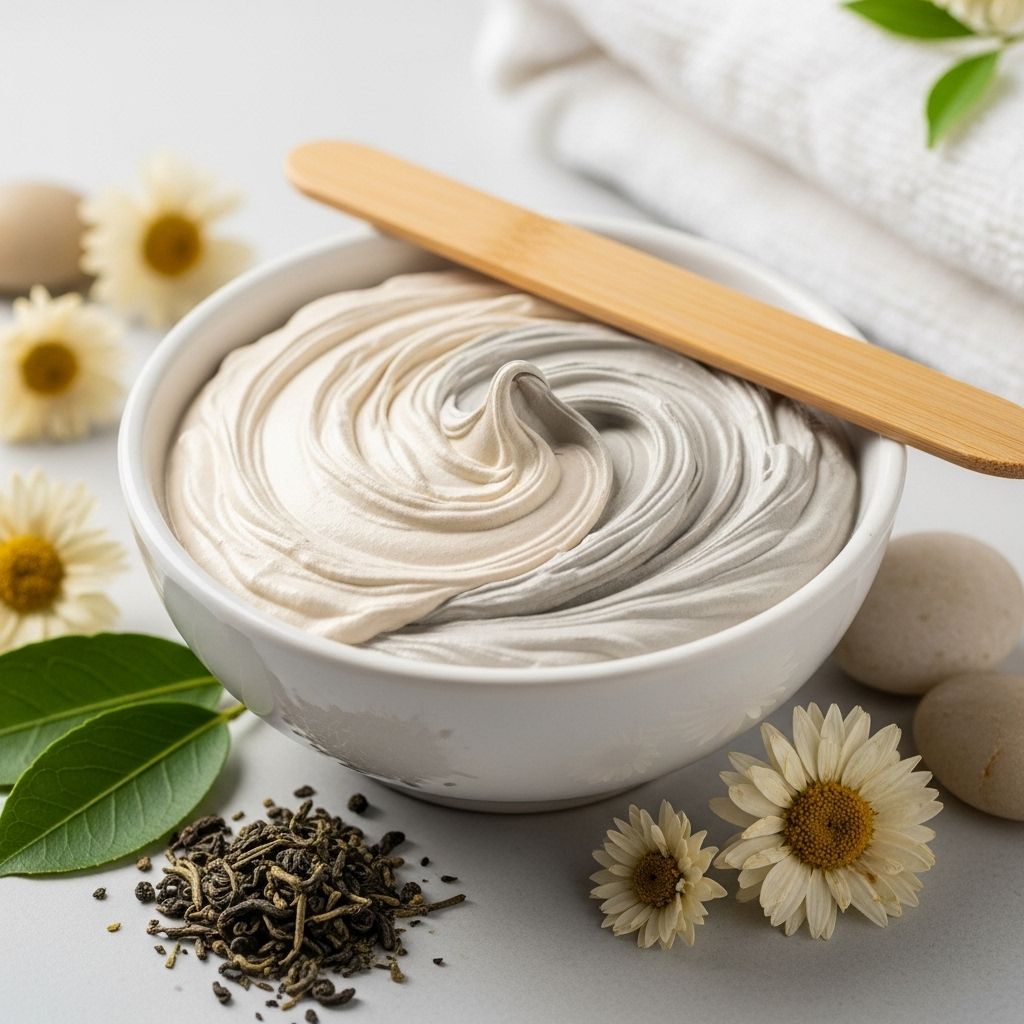Kaolin vs. Bentonite Clay Mask for Teens: A Comprehensive Comparison
Each natural formula brings unique care, targeting excess oil or nurturing delicate skin.

Table of Content
Here’s a quick overview of what you’ll learn in this article:
– Introduction– Types of Clay Masks: Kaolin and Bentonite– Benefits of Each Clay Type– How to Use Clay Masks– Choosing the Right Clay for Your Skin– Frequently Asked Questions (FAQs)
Introduction
Clay masks have been a staple in skincare for centuries, offering natural and effective ways to cleanse and rejuvenate the skin. Two of the most popular types of clay used in skincare are kaolin clay and bentonite clay. Each has unique properties that cater to different skin types, making them suitable for various needs, especially for teens who are just starting to explore skincare routines.
This article aims to provide a comprehensive comparison between kaolin and bentonite clay masks, focusing on their benefits, suitability for different skin types, and how teens can incorporate them into their skincare routines.
Types of Clay Masks: Kaolin and Bentonite
1. Kaolin Clay
Kaolin clay, often referred to as China clay, is one of the mildest and most gentle types of clay. It is made from the mineral kaolinite and is rich in silica and quartz, which provide detoxifying benefits. Kaolin clay is available in several colors, including white, yellow, red, and pink, each with slightly different properties. White kaolin is the most common and is particularly suitable for sensitive skin due to its mild nature.
Kaolin clay works by gently removing dead skin cells and surface impurities without stripping the skin of its natural oils. This makes it an excellent choice for dry, sensitive, or mature skin. It is also known for its ability to absorb excess oil while still maintaining moisture levels, making it beneficial for maintaining balanced skin health.
2. Bentonite Clay
Bentonite clay, formed from volcanic ash, is known for its incredible ability to absorb toxins and impurities from the skin. When mixed with water, bentonite clay forms a paste that swells, allowing it to draw out dirt and excess oil from deep within the pores. It is rich in minerals such as calcium, magnesium, and iron, which nourish the skin and improve its overall health.
Due to its potent absorbing properties, bentonite clay is ideal for oily and acne-prone skin. It helps reduce the frequency and severity of breakouts by controlling excess oil production. Additionally, its antibacterial properties aid in minimizing blemishes and promoting clearer skin. However, its strong absorption can be too drying for sensitive or dry skin.
Benefits of Each Clay Type
Benefits of Kaolin Clay:
- Gentle Purification: Kaolin clay gently removes dead skin cells and impurities without causing irritation, making it perfect for sensitive skin.
- Moisture Balance: It helps maintain the skin’s natural moisture levels, preventing over-drying.
- Detoxifying Properties: Rich in silica and quartz, kaolin clay provides detoxifying benefits that can help purify the skin.
Benefits of Bentonite Clay:
- Deep Cleansing: Bentonite clay deeply cleanses the skin by absorbing toxins and excess oil, making it ideal for acne-prone skin.
- Nourishing Minerals: It contains minerals like calcium, magnesium, and iron, which are beneficial for skin health.
- Anti-inflammatory Properties: Bentonite clay can help reduce inflammation and soothe skin irritations.
How to Use Clay Masks
Using clay masks is straightforward but requires some preparation:
- Preparation: Mix the clay with water or apple cider vinegar to form a paste. For kaolin clay, you can also add aloe vera for extra moisturizing benefits.
- Application: Apply the paste evenly to the face, avoiding the eyes and lips. For bentonite clay, you might feel a tightening sensation as it dries.
- Drying Time: Leave the mask on for about 10-15 minutes before rinsing off with warm water.
- Moisturizing: After rinsing, apply a moisturizer to maintain hydration and prevent dryness, especially if using bentonite clay.
Choosing the Right Clay for Your Skin
Choosing between kaolin and bentonite clay depends on your skin type and needs:
| Clay Type | Best For | Key Benefits |
|---|---|---|
| Kaolin Clay | Sensitive, Dry, Mature Skin | Gentle Purification, Moisture Balance |
| Bentonite Clay | Oily, Acne-Prone Skin | Deep Cleansing, Anti-inflammatory |
Frequently Asked Questions (FAQs)
Q: Is kaolin clay suitable for oily skin?
A: While kaolin clay can help absorb excess oil, it is generally more suited for dry or sensitive skin. However, it can be used on oily skin if not too much oil needs to be absorbed.
Q: Can bentonite clay be used on sensitive skin?
A: It is generally advised against using bentonite clay on sensitive skin due to its strong absorption properties, which can be drying and irritating.
Q: How often can I use clay masks?
A: It is recommended to use clay masks once or twice a week, depending on your skin type and needs. Overuse can lead to dryness or irritation.
Q: Can I use both kaolin and bentonite clay in the same routine?
A: Yes, you can use both clays in different parts of your routine. For example, you can use kaolin clay for sensitive areas and bentonite clay for areas with more oil production.
References
- https://www.revivalabs.com/exploring-the-benefits-and-differences-of-bentonite-clay-and-kaolin-clay-in-skincare/
- https://botanika.life/blogs/news/kaolin-clay-bentonite-clay-activated-charcoal
- https://shreeramkaolin.com/kaolin-clay-vs-bentonite-clay/
- https://eliezerclay.com.au/blogs/natural-skincare/demystifying-clays-exploring-the-differences-between-kaolin-and-bentonite-clay
- https://pmc.ncbi.nlm.nih.gov/articles/PMC10626287/
- https://www.youtube.com/watch?v=nIAsIyYwwrg
Read full bio of Sneha Tete












